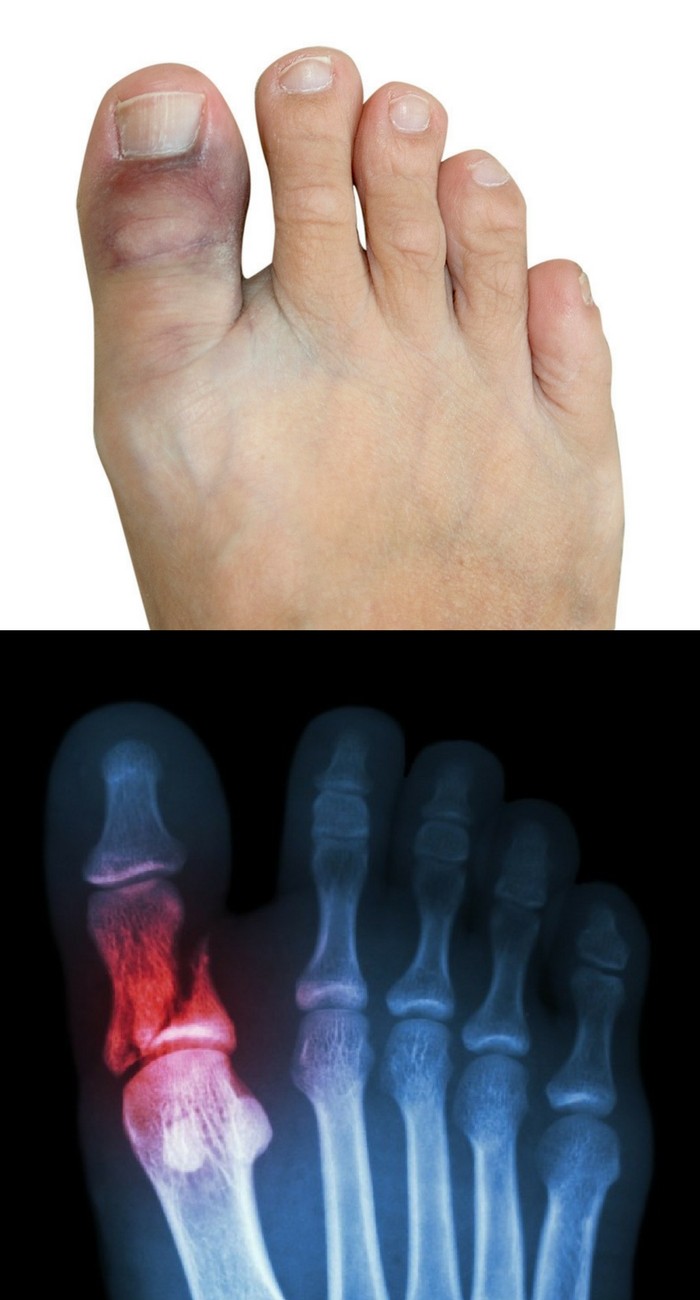
Contents
- 1 Broken Toe (Fracture)
- 1.0.1 Causes of a broken toe
- 1.0.2 Symptoms of a broken toe
- 1.0.3 When to call a doctor
- 1.0.4 Diagnosis of a broken toe
- 1.0.5 Medical treatment for a broken toe
- 1.0.6 Casting for a broken toe
- 1.0.7 Reduction for a broken toe
- 1.0.8 Home care for a broken toe
- 1.0.9 Buddy taping for a broken toe
- 1.0.10 Subscribe to MedicineNet’s Skin Care & Conditions Newsletter
- 1.0.11 Complications of a broken toe
- 1.0.12 Recovery time for a broken toe
- 1.0.13 From
Broken Toe (Fracture)
The small bones of the toes (phalanges) are commonly injured in the foot. The foot has 26 bones, including five metatarsals and 14 phalanges in the forefoot. Trauma or injury to the foot can cause one or more of the toe bones to break (fracture).
Causes of a broken toe
A broken toe can be caused by trauma or injury, such as stubbing or dropping a heavy object on the toe. The location of the toes makes them prone to injury.
- Prolonged repetitive movements, as in certain sports activities, can cause a stress fracture or hairline fracture in the toe.
- People with weakened bones (osteoporosis or other disorders) may develop stress fractures from wearing improper shoes.
Symptoms of a broken toe
- Following injury, pain, swelling, or stiffness may occur in a broken toe. Walking may be difficult, especially with a broken big toe, which bears much of the body’s weight during walking or pivoting. A broken little toe may be painful but usually does not limit the ability to walk.
- Other symptoms include a bruised toe, bruising of the skin around the toe, and a bent or deformed appearance of the toe if the broken bone is out of place.
When to call a doctor
If you suspect a broken toe, don’t assume it’s not broken just because you can walk on it. Seek medical attention if you experience any of the following signs or symptoms:
- Any symptoms of a possible open (compound) fracture, such as open wounds, bleeding, or drainage near the broken toe
- Cold, numb, tingling, or unusual sensation in the toes
- Blue or gray colored skin near the injury
- If the injured toe appears deformed or is pointing in the wrong direction (angulated)
Call a doctor if any of the following occur:
- If the broken toe pain worsens or new pain is not relieved by pain medication
- Sores, redness, or open wounds near the injured toe
- Bruising or bleeding under the toenail that causes significant pain
- A cast or splint is damaged or broken
QUESTION
Diagnosis of a broken toe
Medical evaluation should be sought soon after the injury for proper treatment and healing.
- A doctor will ask questions to determine how the toe was injured and will examine the injured toe and possibly check for other injuries, such as sprains.
- An X-ray may be taken to evaluate if the toe is broken or fractured. X-rays are not always necessary, especially for breaks in smaller toes.
- Stress fractures may require an MRI for diagnosis.
Specialties of doctors treating a broken toe
You may initially see a primary care provider (PCP), such as a family practitioner or pediatrician, for your toe injury. You may be referred to an orthopedist or orthopedic surgeon, who specializes in musculoskeletal disorders, or a podiatrist, who specializes in foot conditions.
An emergency medicine specialist in a hospital’s emergency department may also diagnose a broken toe. Radiologists will interpret X-ray or MRI results and report back to your primary care physician or emergency medicine specialist.
Medical treatment for a broken toe
Treatment for a broken toe depends on the location and severity of the fracture. The fracture may require realignment (reduction) and splinting or casting. Fractures of the big toe, which have a significant weight-bearing role, often require more serious treatment. If there is an open wound near the injured toe, a tetanus shot and antibiotics may also be necessary.
For open (compound) fractures, surgery may be necessary in some cases, and antibiotics will be given. These fractures should be seen by a doctor immediately.
Pain medication for a broken toe
Usually, anti-inflammatory drugs like acetaminophen (Tylenol) or ibuprofen (Motrin) are sufficient for pain relief. Stronger pain medication may be prescribed for severe injuries.
Casting for a broken toe
- A simple toe fracture usually does not require a cast. A hard-soled, sturdy, and supportive shoe or boot is recommended. If the foot or toes are very swollen, a doctor may provide a special shoe.
- A cast may be needed if the big toe is broken, a fracture involves a joint, several small toe fractures occur simultaneously, or a bone in the foot or leg is broken in conjunction with the toe fracture.
Reduction for a broken toe
- If the toe fracture involves displacement, rotation, or dislocation, the doctor may need to reduce or set the broken toe back into place.
- Sometimes, local anesthesia may be used to numb the toe before resetting it.
- Following reduction, a splint will be applied to hold the broken toe in place while it heals.
Home care for a broken toe
Most minor toe injuries can be treated at home. Seek medical attention if you are unsure or suspect a fracture. The following self-care tips may help reduce pain and swelling and facilitate proper healing of the fracture:
- Rest: Avoid strenuous exercise, prolonged standing, or walking. Crutches may be necessary, or a special shoe or boot to avoid putting weight on the fracture.
- Ice: Apply ice in a plastic bag to the injury for 15-20 minutes every one to two hours for the first few days. Use a towel between the skin and the ice to protect the skin. Frozen peas or corn can also be used as an alternative to ice.
- Elevation: Keep the foot elevated above the level of the heart as much as possible to reduce swelling and pain. Prop the foot up with pillows, especially when sleeping. Reclining in a lounge chair can also be helpful.
In certain situations, medical care may be necessary for a broken toe, such as realigning the toe, casting, or splinting.
Buddy taping for a broken toe
If there is a minor or small fracture in one of the small toes, the injured toe may be taped to the neighboring toe for support. This treatment is called buddy taping.
- Place a small piece of cotton or gauze between the taped toes to prevent sores or blisters.
- Using as little tape as necessary, loosely tape the broken toe to the adjacent toe.
- Excessive tightness in the taping can cause additional swelling and restrict circulation to the injured toe.
If the toe is buddy taped, bathing is usually safe, but check with the doctor before removing the tape. Always follow your doctor’s instructions for taping your broken toe.
Subscribe to MedicineNet’s Skin Care & Conditions Newsletter
By clicking "Submit," I agree to the MedicineNet Terms and Conditions and Privacy Policy. I also agree to receive emails from MedicineNet and I understand that I may opt out of MedicineNet subscriptions at any time.
Complications of a broken toe
A subungual hematoma, a collection of blood under the toenail, may develop as a result of a broken toe. Other complications can arise immediately after the injury or develop later. Inadequate treatment of a broken toe can lead to foot deformities and chronic pain. Even with prompt treatment, complications such as nail injury, compound fractures, arthritis, and nonunion/malunion may occur.
Recovery time for a broken toe
Contact the doctor to ensure proper healing of the broken toe. Seek medical attention or go to an emergency department if any problems or complications arise before the scheduled appointment.
The healing time for broken toes is typically about six weeks. If problems persist beyond six weeks, further imaging or evaluation by a doctor may be necessary. Simple toe fractures often heal well without complications, but severe fractures or fractures involving a joint are at risk of developing arthritis, pain, stiffness, or deformity.


